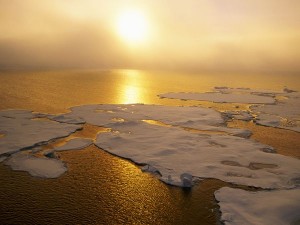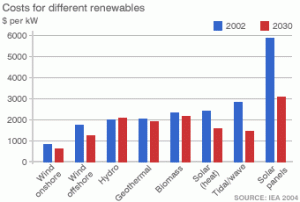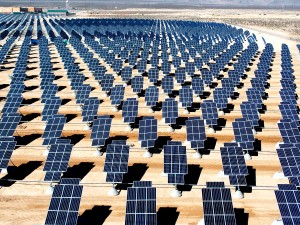The reason I chose to do alternative energy as the topic for my civic issues blog was because their is so much information about it around and a lot of this information is false. Alternative energy is the energy of the future whether we want it to be or not. There is very little time left for fossil fuels as the dangers of using them become more apparent. People need to be more open to the drastic changed necessary to make the switch from fossil fuels to renewables within the next century.
I really wanted to expose a lot of common misconceptions people have as false. One of the biggest ones and one major reason I started this blog is that we don’t have the technology to implement alternative energies on a large scale and that alternative energies are not up for the challenge. However, countries like Germany where one third of their energy is being provided by renewables, are showing that the switch is very possible. Another misconception that is very false is the idea that America does not have enough sun to support a solar power infrastructure. America gets far more sun that Germany, who is leading in solar energy, and simple things like cloudiness are not a factor as people so often believe. People also seem to believe that renewables are all going to be very expensive but solar power is almost as cheap as energy now.
It seems like people are very deterred by these misconceptions and are less optimistic for renewables than they should be. Although it will take a lot of money and work there isn’t really another option than an eventual full switch and people need to be more open to this. A full switch will probably not occur in our lifetime seeing as there would have to be a new infrastructure built and that people are not fully on board for investing in renewables. There is a lack of urgency in talk about alternative energy and the dangers of fossil fuel because people don’t feel like any of the consequences of them are happening now. Global warming is talked about like a future problem that we want to save future generations from but the truth is that we are already seeing major negative effects from the fraction of a degree the earth has already heated. We have the potential to heat the earth more than 2 degrees Celsius in our lifetime and that could be catastrophic. An overall heating of the earth by a few degrees is going to cause flooding and extreme weather that effects humans.
 The biggest misconception of all is that we are doing this to save the earth. The purpose of stopping global warming is not to save the earth, it is to save us. The major thing that global warming is going to do is cause animals to go extinct including humans if we let it go on. After people are gone the earth is going to live on creating ecosystems adaptable to the new temperatures and geography of the earth and after thousands of years will cool again, mostly unaffected by it’s heat spell that will be a blip in it’s timeline. There are other problems we cause that are effecting the earth is drastic ways but global warming is not one of them. Global warming is going to effect the organisms that live on earth is drastic ways and we are one such organism.
The biggest misconception of all is that we are doing this to save the earth. The purpose of stopping global warming is not to save the earth, it is to save us. The major thing that global warming is going to do is cause animals to go extinct including humans if we let it go on. After people are gone the earth is going to live on creating ecosystems adaptable to the new temperatures and geography of the earth and after thousands of years will cool again, mostly unaffected by it’s heat spell that will be a blip in it’s timeline. There are other problems we cause that are effecting the earth is drastic ways but global warming is not one of them. Global warming is going to effect the organisms that live on earth is drastic ways and we are one such organism.
I hope everyone learned something from my blog and that maybe someone is more open and optimistic about renewable energy. Even if renewable energy is something that doesn’t interest you I hope that you at least make sure to check facts when presented with them and be open to new ideas and possibilities involving them. 🙂























